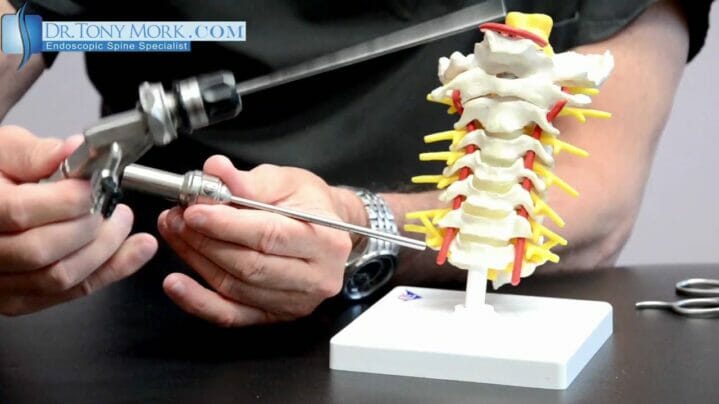The spinal cord comprises a column of nerve tissues that are safeguarded by a canal which runs through the spinal canal from the base of the brain down to your lower back. Conditions that narrow the space within this tube, such as cervical spinal stenosis, poses the risk of the spinal cord getting squeezed and can potentially cause serious problems in your nervous system.
What is Cervical Spinal Stenosis?
Cervical spinal stenosis pertains to the narrowing of the neck's spinal canal,
which is the open area of the bones that comprise the spinal column. The cervical spine is made up of a total of seven vertebrae situated between the head and the chest that protects the spinal cord.
The collection of nerves that make up  the spinal cord allows us to feel, move, and take control of our bowel and bladder. When the spinal canal narrows, it may squeeze and compress the nerve roots or the spinal cord itself which can affect and alter spinal cord functions.
the spinal cord allows us to feel, move, and take control of our bowel and bladder. When the spinal canal narrows, it may squeeze and compress the nerve roots or the spinal cord itself which can affect and alter spinal cord functions.
What Causes Cervical Spinal Stenosis?
Cervical spinal stenosis is often caused by age-related changes in the spinal canal's shape and size, which is common in people over 50 years old. The aging process may cause bulging of the discs or thickening of ligaments or tissues connecting the bones.
Aging can also lead to cartilage damage and excessive bone growth, which could altogether cause narrowing of the spinal canal. In rare cases, bone formation is the cause of a narrowed spinal canal right from birth.
What are the Symptoms of Cervical Spinal Stenosis?
Many people who have cervical spinal stenosis do not exhibit symptoms unless their spinal cord or nerves are squeezed. Signs and symptoms usually gradually develop over a long period, including:
Pain, numbness, stiffness or weakness. Nerve pressure can cause minor to chronic pain radiating from the neck to the shoulder, upper back and down to one or both arms. It also causes numbness on the skin and weakness in the muscles supplied by the nerve. Patients usually complain of hands starting to feel numb, and they tend to be clumsy when writing or typing, and easily loses their grip.
Balance and coordination problems. Pressure on the spinal cord can affect leg muscles and nerves, and this is when patients notice a change in the way they walk. Cervical spinal stenosis can be crippling if the spinal cord is severely damaged.
Loss of bowel or bladder control. Mild spinal cord pressure urges you to urinate more often, and you may strain during bowel movements. Incontinence may occur in severe cases when a person lacks voluntarily control over urination or defecation.
How Is Cervical Spinal Stenosis Treated?
If symptoms are severe, with the spinal cord or nerve
s tightly squeezed and there's progressive muscle weakness, decompression surgery is the most immediate way to relieve pressure.
Don't wait for the symptoms to become severe before considering treatment. For mild cases of cervical spinal stenosis, pain-relief medications, neck exercises and physical therapy can often control the symptoms.
Cervical spinal stenosis exercises involve stretching and strengthening the muscles and bones of the neck. It's important to consult a professional beforehand. Your doctor or physical therapist can design a program with poses, stretches and exercises specific to your needs. Here are some stretches that offer support, stability and help maintain flexibility.
Chin Tuck
- Stand with your spine against a wall and your feet at a 3-inch distance from the wall.
- Maintain the spine's position as you slowly and gently tuck your chin in, while keeping your jaw and muscles relaxed.
- Hold the chin tuck for five seconds then return to starting position.
Seated Shoulder Shrugs
- While remaining on your seat, draw the shoulder blades together.
- Hold this position for a second or two, then return to normal position.
- Do 20 repetitions.
Backward Shoulder Shrugs
- Lift your shoulders up toward your ears
- Roll back down and again to starting position
- Do 10 repetitions of this rolling motion in 3 sets.
Scalene Stretch
Stretches out your neck muscles, tendons, and helps improve the neck's range of motion. To do the scalene stretch:
- Sit upright with your back straight in a chair.
- Tuck your chin slightly towards your chest.
- Next, bend your head to the left to stretch the right side of your neck.
- Hold for 20 seconds, rest, then do the same for the other side.
- Repeat 3-4 times.
With knowledge and understanding of your condition, and guidance on what exercises can help, you are empowered to take healthy steps towards relieving your cervical spinal stenosis pain. Remember, do not wait until your symptoms become so bad that they start affecting your daily activities. Contact a doctor as soon as possible.
